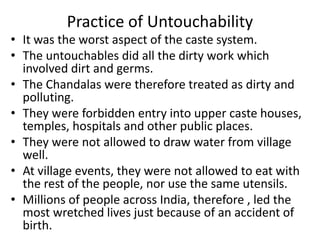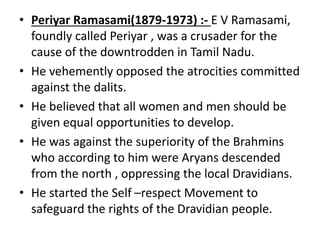The document discusses the history and evolution of the caste system in India. It describes how the caste system started as an occupational division but became rigid over time, assigning people's caste at birth. This led to oppression of lower castes through practices like untouchability. Many social reformers spoke out against caste-based discrimination in the 19th-20th centuries, including Jyotirao Phule, B. R. Ambedkar, and Mahatma Gandhi, helping to abolish untouchability and establish equality and reservation systems in modern India.














